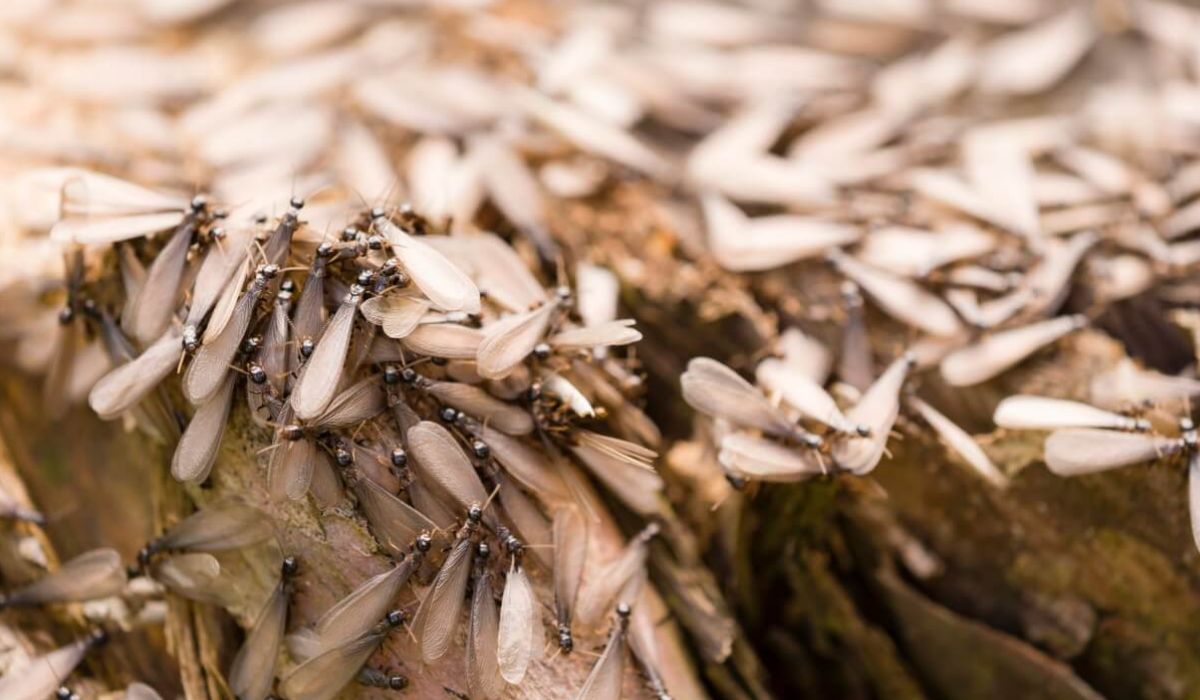Termites are an interesting group of insects due to their complex social structures and destructive potential. Some termites, at a certain point in their development, develop wings, setting them apart from the rest of the species. The reproductive success of these winged termites, often known as “termites with wings” or “winged termites,” is essential to the overall health of termite colonies. This essay will take you on a journey into the fascinating world of winged termites, delving into their biology, lifestyle, and significance.
Anatomy of Termites with Wings
Alates, or winged termites, can be easily distinguished from other members of the termite colony due to their unique morphological characteristics. These beings have two sets of wings, with the bigger set being used for flight. The ability to fly and spread to new colonies is made possible by the wings, which are often transparent and veined. Since the alates lose their wings after reproducing and establishing a new colony, they are only a transient feature.
Life Cycle of Termites with Wings
Winged termites begin their life cycle inside of an established termite colony. In response to environmental cues like shifts in temperature and precipitation, the colony produces these winged termites, which are the reproductive individuals. When conditions are favorable, the colony will generate alates, which could become the future swarm leaders of a new termite colony.
After leaving their parents’ colony in masse, the alates take to the air in search of mating grounds. After mating, the alates lose their wings and enter the next phase of their life cycle. After mating, the wingless couple looks for a good place to start a new termite colony.
Behavior of Termites with Wings
Winged termites’ actions are driven by a desire to reproduce and start a new colony. Swarming alates are at their most active and visible after rain, when they take to the air in enormous numbers. Swarming behavior facilitates mating between individuals from various colonies, which increases genetic diversity in the offspring.
The alates moult their wings after a successful mating and begin work on a new nest. The initial generation of workers, raised by the king and queen together, is the backbone of a new termite colony.
Significance and Impact
There would be no termite life cycle or environment without winged termites. Termites spread and start new colonies because of their swarming activity. Termite swarms are fascinating to observe, but they can be unsettling to humans since they often portend future termite infestations and structural damage.
In order to avoid termite infestations and limit damage, pest management specialists and homeowners must have a firm grasp of the biology and behavior of winged termites. The protection of buildings and the preservation of a termite-free environment depend on early detection of termite swarms and swift action to remove infestations.
Conclusion
Termites with wings are the reproductive individuals in a colony, therefore they play a crucial role in creating new nests. Understanding the complexity of termites and the need of controlling their populations requires an understanding of their unique anatomy, life cycle, behavior, and significance.
Frequently Ask Questions (FAQs)
What are termites with wings?
A reproductive individual inside a termite colony, winged termites are called alates. Termite swarmers have two sets of wings and can potentially rule over new colonies.
What is the purpose of the wings on termites?
Termites’ wings, especially those of alates, help them spread from one location to another. A new colony is formed when an alate leaves its colony in search of a mate. They lose their wings after mating and starting a new colony.
How do termites with wings contribute to termite colonies?
Termites with wings help the colony by starting new nests and increasing the termite population. They are crucial to the termite life cycle and the continued success of termite colonies.
When do termites with wings appear?
Alates, or winged termites, tend to appear at predictable times of year in response to weather and other environmental cues. Swarms of termites, known as alates, often make an appearance following a rainy spell.
What happens after termites shed their wings?
Termites with wings do so after mating successfully and then discard them. After mating, the pair looks for a good place to start a new colony by building a nest. The female becomes the colony’s queen, and she works alongside the male (king) to lay the colony’s groundwork.











